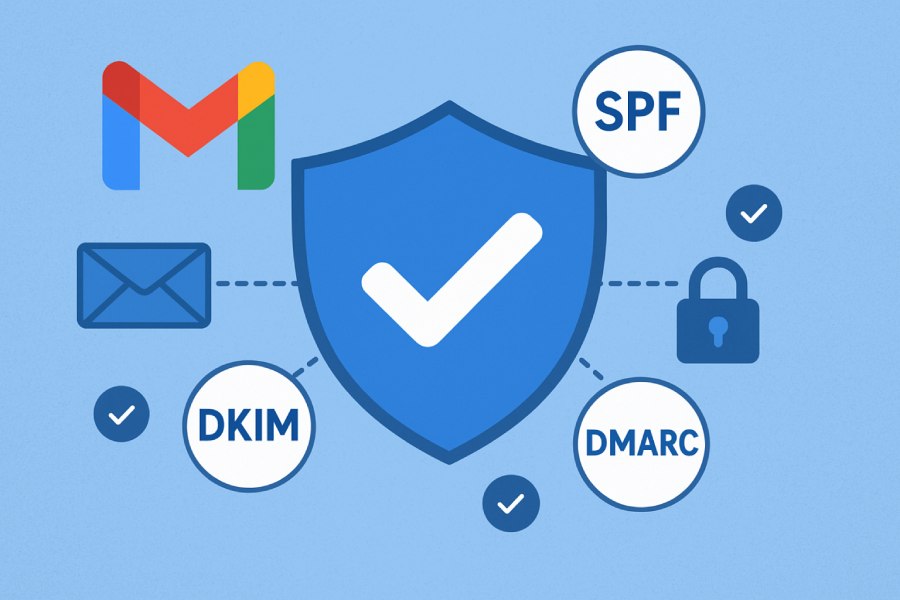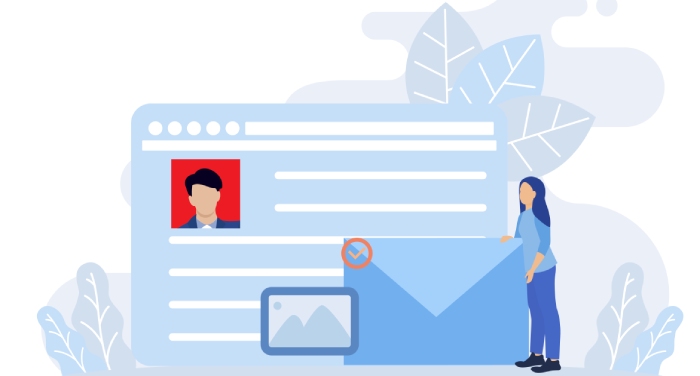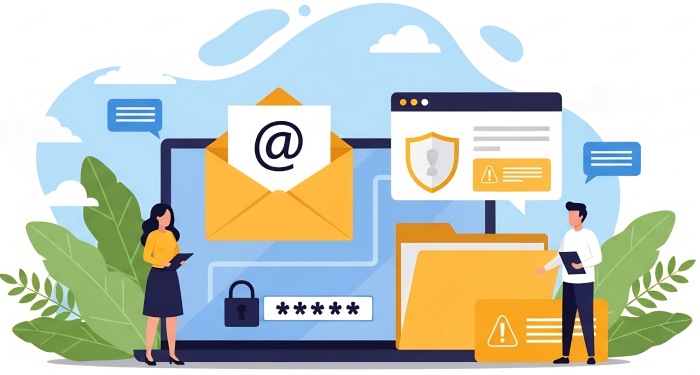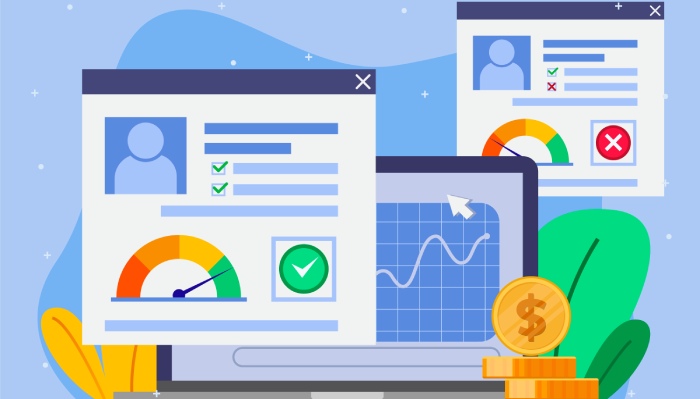In today’s cyber threat landscape, robust email security is paramount for organizations leveraging Google Workspace and Gmail as their primary communication tools. Integrating DomainKeys Identified Mail (DKIM) with Sender Policy Framework (SPF) and Domain-based Message Authentication, Reporting, and Conformance (DMARC) offers a comprehensive approach to email authentication and fraud prevention.
This article provides an expert walkthrough of these technologies, emphasizing their configuration and synergy within Google‘s cloud ecosystem to enhance email delivery, message integrity, and domain authentication.
Understanding Email Authentication: An Overview
Email authentication is the foundation of modern email security, designed to verify that inbound email originates from the claimed source and to mitigate threats such as email spoofing and phishing. By leveraging authentication protocols like SPF, DKIM, and DMARC, organizations can enforce email policies that improve email trust and reduce spam and fraud.
At its core, email authentication works by analyzing email headers, cryptographic signatures, and DNS records. These mechanisms provide crucial data points for mail transfer agents (MTAs) to determine whether to accept, reject, or flag inbound emails. Google’s email infrastructure—including Gmail and Google SMTP Relay—fully supports these protocols, enabling enterprises using Google Workspace to maintain high standards of email security and compliance.
What is DKIM and How Does It Work in Google Apps?
DomainKeys Identified Mail (DKIM) is an email authentication method that uses public key cryptography to digitally sign outgoing messages, ensuring message integrity and verifying the sender’s domain ownership. When Google Workspace sends outbound email through Gmail or Google SMTP Relay, it attaches a cryptographic signature generated using a private key.
This signature is published in the email headers in the form of a DKIM record. Recipients’ mail servers validate the signature against a corresponding public key stored as a DNS TXT record in the sender’s domain DNS zone, such as with DNS providers like Google Domains or Cloudflare. This validation proves that the message was not altered in transit and truly originated from an authorized server.
To integrate DKIM in Google Apps, the Google Apps admin or the Google Workspace administrator must generate the keys via the Google Admin Console, then publish the public key by adding the correct TXT DNS entry. This setup process is often referred to as setup DKIM Google. Proper DKIM configuration helps defend against email spoofing, contributing to Google’s layered anti-phishing measures and email fraud detection.
Setting Up DKIM in Google Workspace: Step-by-Step Guide
- Access the Google Admin Console: Sign in using your Google Workspace administrator credentials. Navigate to “Apps” > “Google Workspace” > “Gmail” > “Authenticate email.”
- Generate DKIM Keys: Choose your domain and select “Generate new record.” Google Cloud’s generation uses cutting-edge public key cryptography to create a private-public key pair. The private key remains on Google‘s mail servers, while the public key is provided for DNS publishing.
- Publish the DKIM DNS TXT Record: Copy the generated TXT record data, which includes the selector and the public key, and add it to your domain’s DNS zone using your domain registrar or Google Domains or DNS providers like Cloudflare.
- Enable Email Signing: After DNS propagation (which can take up to 48 hours), return to the Google Admin Console to activate DKIM signing by toggling the setting. This instructs Google’s mail transfer agent to sign all outbound emails using the private key.
- Verify DKIM Status: Use tools such as Google Postmaster Tools or third-party platforms like OpenDKIM and email headers analysis utilities to validate the signature and ensure proper email delivery and authentication.
By completing these steps, organizations reinforce email spam protection and bolster Gmail‘s defense against impersonation and phishing attacks.
Exploring SPF: Purpose and Configuration for Google Apps
Sender Policy Framework (SPF) is a critical email authentication protocol that specifies which mail servers are authorized to send email on behalf of a domain. Its purpose is to prevent spammers from forging the “From” address, thus reducing email phishing prevention and email spoofing risks.
SPF works by publishing an SPF TXT DNS entry in the domain’s DNS records, listing all approved IP addresses and hostnames capable of sending mail. When an incoming MTA receives an email, it checks the sender’s SPF record to verify if the originating server’s IP matches any authorized entry.
For Google Workspace, setting up SPF involves adding or updating your domain’s DNS TXT record with Google’s SPF include directive:
“`
v=spf1 include:_spf.google.com ~all
“`
This line authorizes all Google mail servers, including Gmail and Google SMTP Relay, to send outbound email on behalf of your domain. Additional services like third-party marketing platforms or Microsoft email servers can be added as needed.
Proper SPF configuration assists Google email security by improving email domain verification and enhancing email trustworthiness. Moreover, SPF complements DKIM by enabling downstream services to verify domain alignment, which is a prerequisite for DMARC enforcement.
Introduction to DMARC and Its Role in Email Security
Domain-based Message Authentication, Reporting, and Conformance (DMARC) is an advanced authentication protocol that builds on DKIM and SPF to offer email senders control over how unauthenticated messages are handled. Published as a DNS TXT record, DMARC informs receiving MTAs about the authentication policy—whether to monitor, quarantine, or reject messages failing SPF or DKIM checks.
DMARC’s significance lies in its ability to enforce email policy at scale, ensuring that spoofed or phishing emails are minimized. It provides detailed reports back to domain owners, which enable continuous monitoring for email fraud detection and compliance. Utilizing DMARC in Google Workspace environments enhances Google email compliance and mitigates threats associated with email spoofing since Gmail and other providers like Yahoo Mail, Microsoft, Cisco, and Proofpoint respect these policies.
The typical DMARC record looks like this:
“`
v=DMARC1; p=reject; rua=mailto:dmarc-reports@yourdomain.com; ruf=mailto:dmarc-forensics@yourdomain.com; pct=100
“`
Here, `p=reject` instructs recipient mail servers to reject email failing SPF and DKIM verification, complementing email spam protection and preserving email signature validation integrity.
Integrating DMARC with SPF and DKIM in Google Workspace requires publishing this record through your DNS provider and monitoring the reports, which can be viewed through tools such as Google Postmaster Tools or third-party services like Valimail, Agari, or Google Apps Script automations for advanced reporting and response.
By leveraging these three pillars—DKIM, SPF, and DMARC—within Google’s cloud infrastructure, organizations establish a robust, multilayered defense that protects against email phishing, reinforces email encryption standards (when combined with SSL/TLS encryption), and ensures reliable email delivery and email trust across inbound and outbound mail flows. Proper mail server configuration, domain authentication, and policy enforcement in Google Workspace enable enterprises to align with best practices in Google email security and maintain a resilient posture against evolving email threats.
Integrating DKIM, SPF, and DMARC: Why a Combined Approach Matters
DomainKeys Identified Mail (DKIM), Sender Policy Framework (SPF), and Domain-based Message Authentication, Reporting, and Conformance (DMARC) collectively form a robust trio of email authentication protocols essential for reinforcing email security within Google Workspace and beyond. Each protocol addresses specific facets of email verification and fraud prevention, and their integration ensures a comprehensive defense against email spoofing and phishing attacks.
DKIM leverages public key cryptography to affix a cryptographic signature to outbound email headers, allowing inbound mail servers such as Gmail and Yahoo Mail to validate the email’s message integrity by querying the corresponding DKIM record stored as a DNS TXT record in the sending domain’s DNS. The DKIM record contains the public key, enabling the receiving mail transfer agent to verify that the email was indeed signed by the authorized private key holder, mitigating the risk of email header forgery.
SPF, on the other hand, specifies which mail servers are authorized to send outbound email on behalf of the domain by using a TXT DNS entry. When set up correctly in the DNS configurations via platforms like Google Domains or Cloudflare, SPF helps the receiving email relay server validate if the sending IP is permitted to send mail, thus reducing email spoofing.
DMARC builds on DKIM and SPF by providing an authentication policy for the domain along with reporting capabilities. It instructs receiving servers how to handle messages that fail DKIM or SPF validation and allows domain owners to receive feedback via email authentication reports, facilitating improved email fraud detection and enforcement of email policy. DMARC policies also improve email spam protection by preventing unauthorized emails from being delivered to inboxes, thereby enhancing email trust.
Google Postmaster Tools integrates seamlessly with Google Workspace administrators using the Google Admin Console to monitor DMARC and SPF compliance, enabling continuous email domain verification and authentication protocol tuning.
Common Challenges and Troubleshooting Tips for Google Apps DKIM
Setting up DKIM within Google Workspace entails generating the DKIM record and adding a corresponding TXT DNS record in the domain registrar’s DNS settings, which can be managed via the Google Admin Console or external services like Cloudflare or Google Domains. Despite comprehensive documentation from Google, common issues persist that can affect DKIM functionality.
One frequent challenge is ensuring DNS propagation time after publishing the DKIM DNS TXT record; propagation delays can cause transient signature validation failures in inbound email verification. Using DNS lookup tools helps confirm whether the DKIM record is correctly published.
Another challenge arises from misconfigured mail server configurations or using incompatible mail transfer agents that modify email headers after signing, which invalidates the DKIM signature. Ensuring that the signing occurs closest to the outbound email origin, such as Google SMTP relay or Google email relay services, helps preserve message integrity.
Additionally, improperly managing private key security during email signing can compromise the trustworthiness of the DKIM process. Google Cloud Identity services provide advanced identity and access management controls relevant for securing the private key and related credentials.
To streamline ongoing DKIM management, Google Apps Script can automate monitoring tasks through email headers analysis, extracting signature validity and alignment data. Tools like OpenDKIM, deployed alongside Google Cloud environments, further offer diagnostics and logs for DKIM troubleshooting.
Monitoring and Analyzing Email Authentication Reports
Monitoring email authentication efficacy is critical for maintaining email security in Google Workspace environments. DMARC generates aggregate and forensic reports that reveal the performance of SPF and DKIM in protecting domain authenticity and exposing potential phishing attempts.
Google Postmaster Tools offers Google Apps admins detailed insights into outbound and inbound email flows, revealing authentication status, email spam protection effectiveness, and message delivery issues. These reports analyze email signature validation results and SPF alignment, helping administrators adjust email policies to minimize false positives and false negatives.
Email headers analysis, either manually or via automation using Google Apps Script, can extract critical information such as DKIM-Signature headers and SPF results, providing granular insight into authentication failures or alterations during email transit. This granular analysis compliments DMARC.org’s recommended reporting format, enabling domain owners to understand attack vectors and the domains affected.
For enterprise-level email security, integration with tools from Cisco, Proofpoint, Valimail, or Agari can augment Google email security stacks, facilitating real-time email fraud detection and quarantine capabilities.
Best Practices for Maintaining Email Security in Google Workspace
To uphold a robust email security posture, Google Workspace administrators should enforce a comprehensive email authentication strategy that combines DKIM, SPF, and DMARC with rigorous monitoring and proactive management. Begin with domain authentication by meticulously publishing and verifying DKIM records as DNS TXT entries and configuring SPF to list only authorized sending IP addresses.
Leverage the Google Admin Console for periodic audits, ensuring all outbound email from Google Certified Domains aligns with Google email compliance rules and local regulatory requirements. Regularly review DMARC reports via Google Postmaster Tools, adjusting policies from monitoring to enforcement modes based on traffic analysis.
Implement SSL/TLS encryption to secure email delivery channels between mail servers, including Google SMTP relay setups, reducing the risk of man-in-the-middle attacks during email transmission. Encourage the use of email encryption standards and routinely verify email signature validation to maintain message integrity end-to-end.
Enable Google Vault for compliance and retention management, and leverage Google Cloud Identity for granular access controls, ensuring private keys and authentication credentials remain secure. Implement strict outbound email filters and enforce inbound email policies to combat email phishing prevention actively.
Finally, educate users on recognizing suspicious emails and promote email headers analysis practices, alongside automated tools, to enhance organizational email fraud detection.
Future Trends in Email Authentication and Security Protocols
As cyber threats continue to evolve, the future of email authentication will see increased adoption of advanced authentication protocols and tighter integration with cloud identity and security services.
Machine learning-based email fraud detection integrated with Google Cloud and third-party security vendors like Cisco and Proofpoint will raise the bar for AI-powered phishing prevention and threat intelligence. The continued development of improved DKIM variants that support stronger cryptographic algorithms is expected to reinforce message integrity in the face of quantum computing threats.
Google Workspace will likely augment Google email relay and SMTP relay services with more granular authentication protocol enforcement, leveraging real-time analytics from Google Postmaster Tools and enhanced email headers analysis frameworks.
Emerging standards will push for universal domain authentication, where DMARC compliance becomes a baseline for email trust across all providers, including Google, Microsoft, and Yahoo Mail. Innovations in email signing will likely converge with broader digital identity efforts supported by Google Cloud Identity and Google Apps admin tools, streamlining secure email delivery and compliance.
The integration of email encryption standards with authentication protocols will deepen, promoting end-to-end encrypted email flows within Google Cloud infrastructures, enhancing privacy and compliance simultaneously.
FAQs
What is the role of DKIM in email authentication?
DKIM uses public key cryptography to sign outbound email messages digitally, allowing receiving mail servers to verify that the message is unchanged and sent from an authorized source via the corresponding DKIM record in the DNS TXT entry.
How do SPF, DKIM, and DMARC work together to prevent email phishing?
SPF authorizes sending servers, DKIM validates message integrity through cryptographic signatures, and DMARC sets policies and provides reporting frameworks, combining to prevent email spoofing and phishing by ensuring only legitimate emails pass through.
How can I check if my DKIM record is correctly set up in Google Workspace?
Use DNS lookup tools to verify the presence of the DKIM DNS TXT record published by Google Admin Console, and send test emails to Gmail accounts with enabled authentication headers inspection or use Google Postmaster Tools for comprehensive signature validation reports.
Why is monitoring email authentication reports important?
Monitoring via DMARC reports and Google Postmaster Tools helps identify unauthorized email sources, authentication failures, and potential phishing campaigns, enabling timely policy adjustments and enhancing overall email security.
What are common issues when setting up DKIM in Google Apps?
Common challenges include DNS propagation delays, incorrect private key handling, mail server configuration errors that alter headers post-signing, and improper DNS TXT entry format, all of which may invalidate the DKIM signature.
Can Google Apps Script assist with email authentication management?
Yes, Google Apps Script can automate email headers analysis, parse authentication results from inbound emails, and generate alerts or reports to help Google Apps admins maintain effective email security policies.
How does Google Cloud Identity relate to email security?
Google Cloud Identity manages secure access to Google Workspace services, protecting private keys and credentials used for email signing and authentication, forming a key part of the overall email security framework.
Key Takeaways
- Combining DKIM, SPF, and DMARC ensures a multi-layered defense against email spoofing and phishing within Google Workspace.
- Proper DKIM record setup and private key management are critical for maintaining message integrity and authentication protocol effectiveness.
- Regular monitoring through Google Postmaster Tools and analyzing email authentication reports supports proactive email fraud detection.
- Maintaining secure mail server configurations, SSL/TLS encryption, and Google email compliance policies strengthens outbound and inbound email security.
- Future trends focus on advanced cryptography, AI-powered fraud detection, and seamless integration of email authentication with digital identity frameworks.






